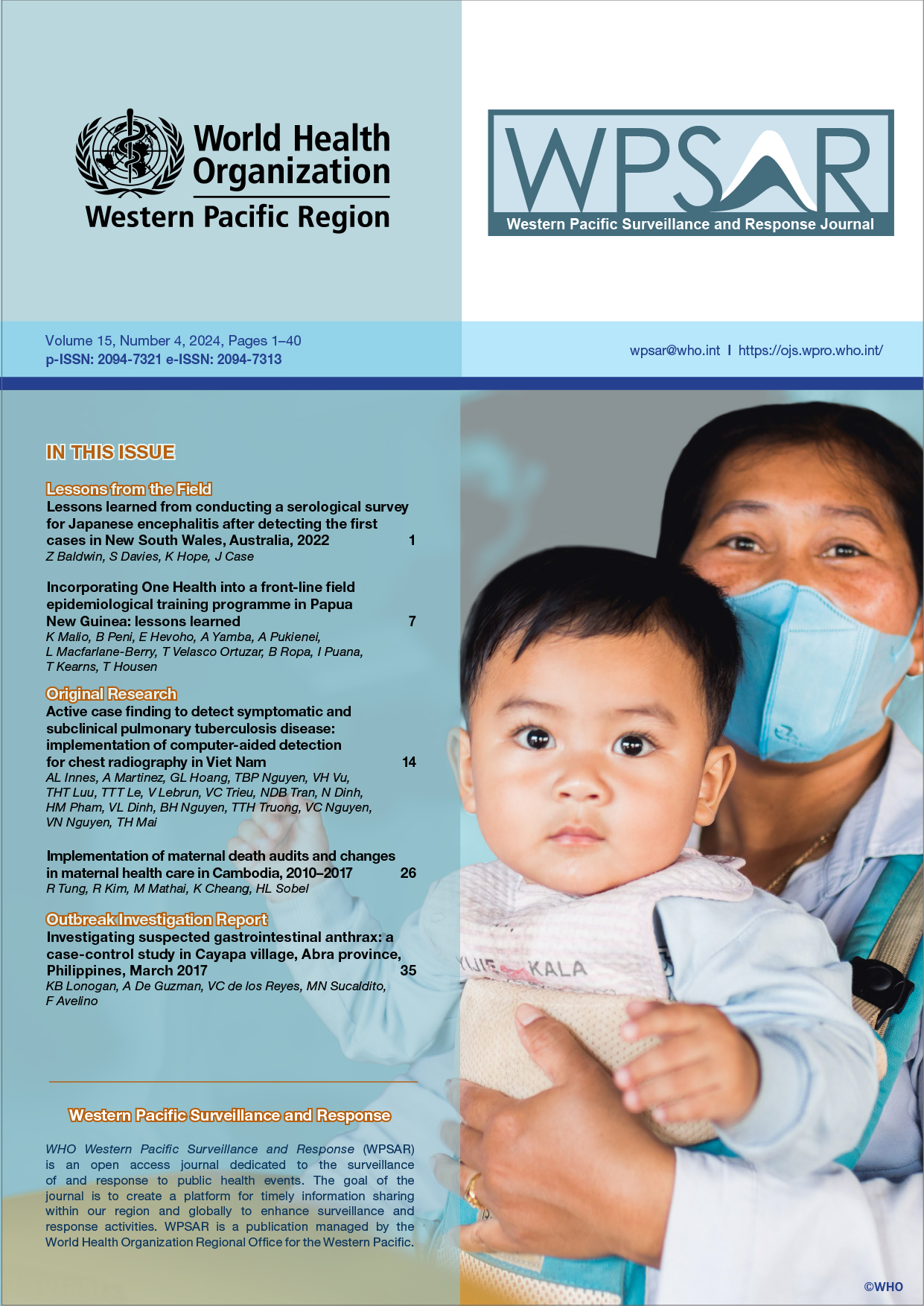Incorporating One Health into a front-line field epidemiological training programme in Papua New Guinea: lessons learned
DOI:
https://doi.org/10.5365/wpsar.2024.15.4.1107Keywords:
One Health, outbreaks, epidemiology, training of trainers, inservice training, public health surveillance, evidence-based practiceAbstract
Problem: Over the past two decades, there has been increased recognition of the importance of a more holistic approach to preventing, predicting, detecting and responding to public health threats. The COVID-19 pandemic highlighted the need to bring together environmental, human and animal health sectors in addressing public health threats and the need to develop skilled front-line workers to act as surge capacity during health emergencies.
Context: Papua New Guinea is a high-risk country for emerging and re-emerging pathogens. The effects of climate change, human-mediated encroachment on natural habitats and destructive land-use practices have threatened ecosystems and caused environmental damage. The movement of goods, animals and people over porous borders provides opportunities for the introduction and spread of new pathogens.
Action: In recognition of the importance of multisectoral responses to health threats in Papua New Guinea, and the need to train front-line workers, we designed and piloted a 3-month One Health in-service training programme for front-line workers from across all sectors.
Lessons learned: The co-creation of curricula was essential in ensuring the relevance of the programme to front-line workers from multiple sectors, and the development of provincial training teams was key to ensuring mentorship and programme sustainability. Bringing front-line workers together in joint trainings facilitated the building of relationships, the understanding of the roles and responsibilities of the various sectors, the identification of sectoral focal points and the development of informal networks.
Discussion: Papua New Guinea’s One Health front-line Field Epidemiology Training Program demonstrated that investment in cross-sectoral training programmes can be a catalyst for the implementation of One Health approaches on the front line.

